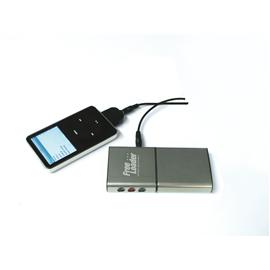Anyone who knows me will know that I’ve always been a fan of solar (photovoltaic) energy production. This goes from tiny little solar panels that I used with Coder Dojo to wire up fans and LEDs to larger scale panels that are used to keep my phones and other devices charged when out and about.
My latest purchase is the Anker 14W Solar Panel Foldable Dual-port Solar Charger.
I was pretty pleased with the package – it was smaller than I expected and seemed sturdy enough. It fits neatly into my hiking backpack when I’m not using it and when I am using it, I’ll tie it using cords to the back of the back – the built-in rings seem very resilient. The company advises using the included pockets for holding devices you’re charging (to keep them out of the direct sunshine). I’d like them to be a little bigger but that’s only because my devices are a little bulkier.
I tested this during the week in some weak summer sunshine here in Northern Ireland and I was able to generate nearly 7 Watts (5.09 Volts, 1.35 Amps). That’s about 50% of the potential output of the panel but considering I was just sitting in a park with plenty of surrounding tree cover, no effort being made to optimise the angle and a little bit of cloud cover – coupled with the weak Northern Irish sunshine – I was happy to see I could easily power and charge a phone.
Your phone likely needs 5 Watts of Power (5 Volts, 1 Amp). The average PC USB port outputs 2.5 W (5V, 0.5A). Your iPad needs about 12 W (5.1V, 2.1A). The device I’m using to measure this is a pass-thru USB power monitor by PortaPow. It can check any USB port for power output and is cheap as chips. For the aspiring geek it’s a useful informational tool.
I’ll be using this panel to charge an Anker 13000 mAh portable battery (superseded by newer models like the Anker Astro e7 with double the capacity). 25600 mAh seems like a lot but the iPhone 6 has a 1810 mAh battery and therefore I’d expect to get 10 charges out of this. Which should be good enough for a week of outdoor usage (assuming I’m using the screen a lot).
Next week I’ll be testing the charger in Southern Spain. I’m interested to see what the difference in throughput will be and how fast it will charge my external battery.




